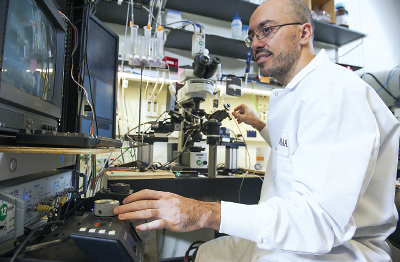NIH to Put $1.1 Billion Toward Tackling Opioid Crisis
Abstract
The Helping to End Addiction Long-term (HEAL) initiative will support research into new avenues to prevent addiction, while also boosting efforts to implement existing addiction therapies in communities.
The National Institutes of Health (NIH) in April announced the launch of the Helping to End Addiction Long-term (HEAL)—an aggressive and ambitious initiative to develop scientific solutions to the country’s ongoing opioid crisis.

A large portion of the $1.1 billion allocated to the HEAL initiative will help fund research that will look for new pain-related biomarkers and new drug targets for pain medications.
“Over the last year, NIH has worked with stakeholders and experts across scientific disciplines and sectors to identify areas of opportunity for research to combat the opioid crisis,” said NIH Director Francis Collins, M.D., Ph.D., in a press release. “The focus of these discussions has centered on ways to reduce the overprescription of opioids, accelerate development of effective non-opioid therapies for pain, and provide more flexible options for treating opioid addiction. NIH is committed to bringing the full power of the biomedical research enterprise to bear on this crisis.”
Backed by a funding boost from the $1.3 trillion omnibus package passed by Congress in late March, that power will include $1.1 billion in support for opioid/pain-related research for the coming fiscal year—nearly double the most recent funding levels. The detailed research plan is still being finalized, but NIH aims to use the funding for a range of projects that will involve the expertise of every one of its institutes and centers. Such projects will be centered around two flagship missions: preventing addiction through enhanced pain management and improving treatments for opioid use disorder.
A major focus of the mission to prevent addiction to pain medications will be to better understand why some people transition from acute pain to chronic pain. To explore this issue, NIH is launching a new clinical trial that will follow patients with muscle-skeletal pain before and after their surgery to identify biomarkers that might predict who is more likely to develop chronic pain. If researchers can determine ways to keep people from transitioning to chronic pain, they could reduce the need for long-term pain management.
NIH also plans to use technology developed through the BRAIN Initiative to uncover new biomarkers that may predict which individuals will respond to treatments to prevent unnecessary prescriptions.
Rebecca Baker, Ph.D., a special assistant to the NIH Director, told Psychiatric News that in addition to long-term goals of identifying new targets for the treatment of pain and biomarkers to determine who will best respond to treatment, the HEAL initiative will also explore more immediate solutions. “We recognize the extent of the public health crisis today and want to put all hands on deck,” she said.
One such program will look at expanding nonpharmacological pain management in clinical settings. This work will build on an existing partnership between the NIH and departments of Defense and Veterans Affairs that is testing the feasibility, acceptability, and effectiveness of treating pain in veterans with approaches such as mindfulness, tai chi/yoga, chiropractic care, and behavioral therapy.
Efforts to improve the treatment of opioid use disorder—the second mission of the HEAL initiative—will start by making existing treatments for opioid use disorder more widely available. “Over 2.5 million Americans currently have a severe opioid use disorder, and more than half do not get appropriate care despite a range of approved options,” Baker said. “This second mission will focus on implementing medication-assisted therapy in more health care, criminal justice, and community settings.”
While many leaders at NIH have previously touched on the importance of public-private partnerships to help quell the opioid epidemic, this new initative will be funded solely with government money. This development comes following an NIH working group recommendation that limiting industry support to federal projects would minimize any perceptions of industry bias. ■
More information on the HEAL initiative can be accessed here.



